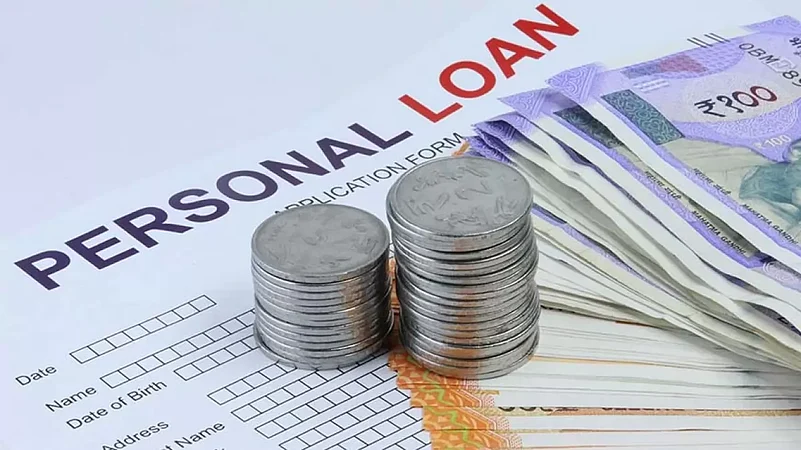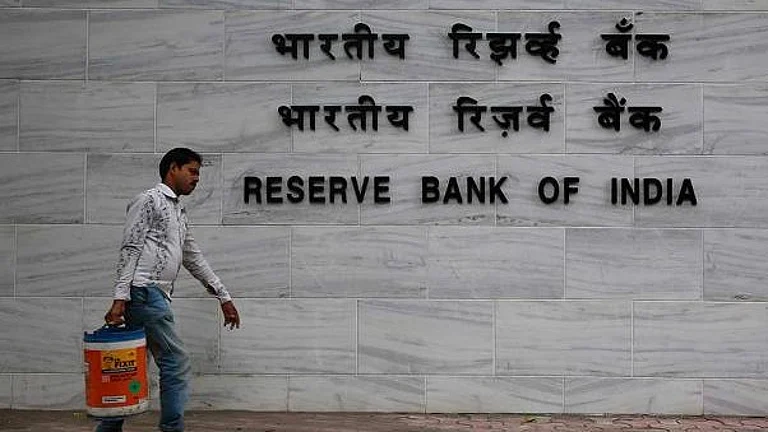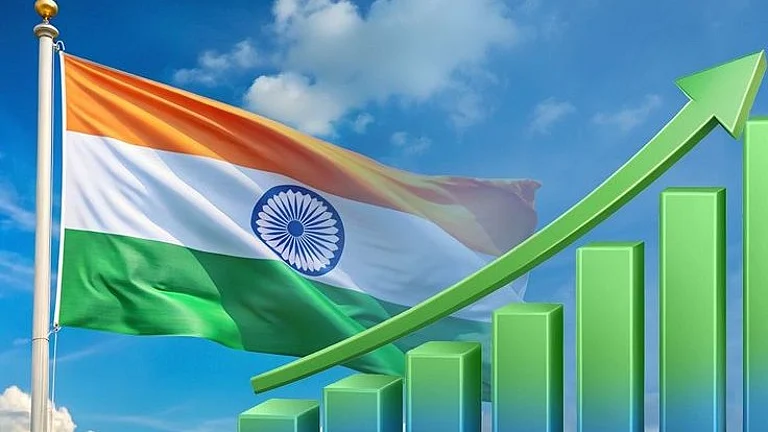The hubris around credit has in a way shaped the 21st century. First the rise and then the fall of subprime lending caused the financial crisis in 2007-08 which shook the global economy. While the world recovered from the episode, India got its own taste of bad loans when several large corporates defaulted in the last decade. Banks’ balance sheets worsened dramatically, with non-performing assets reaching a high of 11.6 per cent in 2017-18 before recovering to 3.9 per cent in FY23.
While Indian policymakers breathe a sigh of relief after the solution of ‘twin balance sheet problem’, the Reserve Bank of India is now concerned about the rise of unsecured loans. Earlier this month, RBI governor Shaktikanta Das said in his statement post the MPC meet, “Certain components of personal loans are recording very high growth. These are being closely monitored by the Reserve Bank for any signs of incipient stress.”
As per the available data, the share of unsecured loans in the retail segment has risen from around 20 per cent in 2018 to 25.2 per cent in FY23. In the last five financial years, the unsecured loans segment has posted strong growth averaging around 23 per cent. It stood at 19.7 per cent in FY23. Importantly, it has outpaced the growth in retail loans, which has seen growth less than 20 per cent consistently over the years.
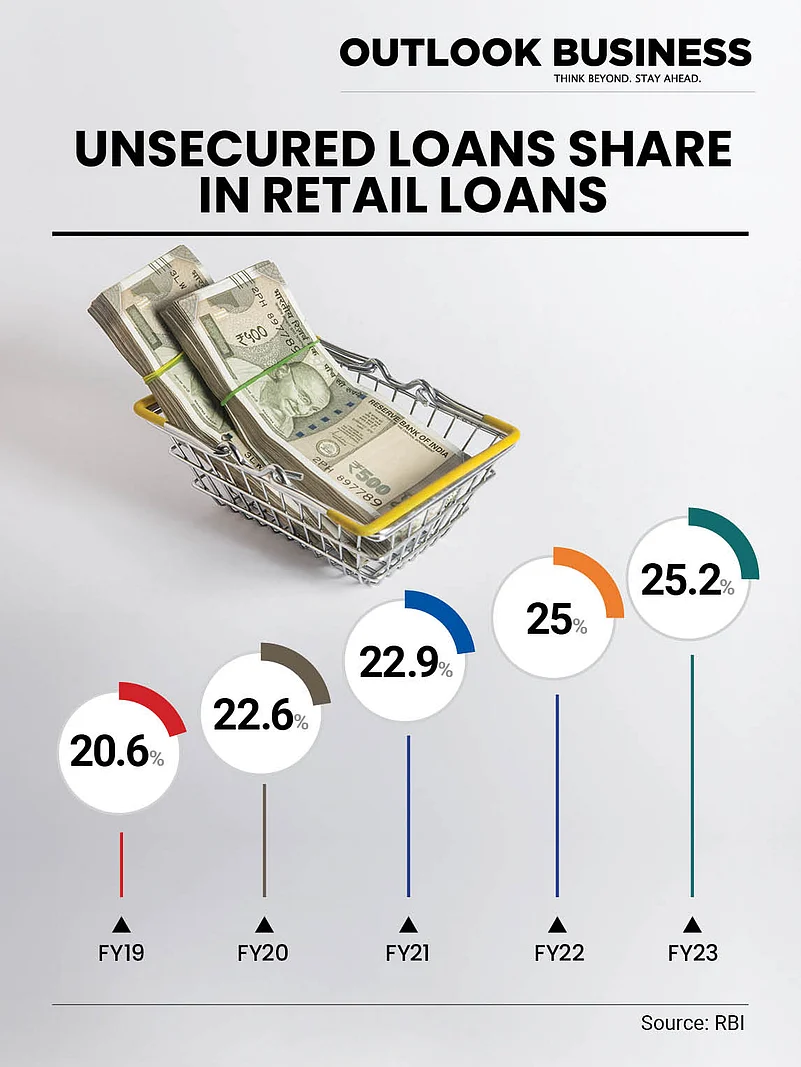
It is this rise which has seemingly worried the RBI. The central bank has not wasted any time and asked banks and NBFCs to keep a check. Afterall, retail loan segment has posted the strongest growth in the last few years.
The rise of such credit has sparked a discussion over the implications for India’s growth. While some analysts insist that banks are in a really good shape and the unsecured loans growth is within control, the fact remains that Indian households are taking on more debt year over year. Amidst dwindling households' savings, the question arises: is credit-led growth worrying for the Indian economy?
Age Of Easy Credit
Over the past few years, banks and NBFCs have seen retail loans picking up. RBI had noted in its financial stability report recently that the retail loans grew at a CAGR of 24.8 per cent between March 2021 and March 2023, significantly outpacing the growth in total gross advances which stood at 13.8 per cent in the same period.
One of the strongest growths has been recorded in the personal loan portfolio of banks over the last decade. Measured as the share of total loan book, personal loans have risen from 19.91 per cent in FY 15 to 29.87 per cent in FY23.

The sectoral deployment of credit shows that personal loan growth has been outpacing industry, services and agriculture segments in the last two financial years. What is driving this strong growth?
Within personal loans, there has been a strong rise in credit cards and vehicle loans. Importantly, credit card loans are unsecured. Indian consumers seem to have embraced credit cards at a pace never seen before. Bernstein analysis showed that the CAGR of value of transactions using credit cards stood at 28.7 per cent between FY12 and FY20. This rose to over 50 per cent between FY21 and FY23.
One set of borrowers, as the data indicates, is clearly spending on premium products. International Data Corporation analysis showed that while overall sales of smartphones declined by 10 per cent last year, mid-premium and premium segments saw a growth of 20 per cent and 50 per cent. Not only smartphones, but the last year also saw the average selling price of laptops and TVs also go up, according to Gfk India.
Commenting on the trend, Chintan Panchmatiya, founder of Switch My Loan, says, “A combination of declining incomes and low interest rates prompted Indian households to embrace credit card spending like never before. The primarily splurging was mostly on consumer goods such as televisions, laptops, and refrigerators.”
Reason To Worry?
Given the fact that consumer demand has seen muted volume growth in last few years, reflected in the data of FMCG companies, the sale of premium of products has been holding up the demand side. However, the growth in the NPA in credit cards rings an alarm. RBI had noted in a RTI reply that the NPA in credit card loans had risen by 24.5 per cent in the first nine months of FY23.
Along with banks, NBFCs have also not been behind in providing loans to the set of borrowers looking for credit. Unsecured loan asset under management grew by 51 per cent for these NBFCs in FY23, as compared to 30 per cent and –2 per cent in FY22 and FY21 respectively. Notably, the last few years has seen the rise of fintechs who have utilised the digital distribution channels to provide easy loans.
The data on personal loans make one thing clear: there is abundance of demand in acquiring debt. From the perspective of banks, analysts feel there is a need of caution. Karan Gupta, Director at India Ratings and Research, says, “Sharp rise in anything should be seen cautiously. The banks are betting on the unsecured segment because of the pressure on their interest margin.” Agreeing with Gupta, Sanjay Agarwal, Senior Director at CareEdge Ratings, says, “Always higher growth rates in any loan segment, especially unsecured loan segment, is a cause of concern.”
However, both of them insist there isn’t a systemic level risk yet. Given the pressure on net interest margins of banks’ recently, they are expected to continue to bet on this segment. In this context, it is important to see what kind of borrowers are receiving credit.

While credit card segment has seen tremendous growth, borrowers of less than Rs 50,000 are flocking to lenders. As per CRIF Highmark data, loans worth Rs 20,000 crore of less than Rs 10,000 were disbursed in FY2022-23, up from Rs 10,000 crore in FY19-20. For loan amount of Rs 10,000-Rs 50,000, disbursals rose from Rs 14,000 crore in FY20 to Rs 48,000 crore in FY23.
It is this segment which has been pinpointed by bank executives for the caution on unsecured loans. "On the unsecured loans, we have seen slight deterioration. These are early days but we do find that delinquency is on a rising trend. Compared to six months ago we are seeing a larger part of the portfolio in the 30-plus days past due (category)," said Yes Bank MD & CEO Prashant Kumar after bank’s Q2 results. ICICI Bank’s Sandeep Batra said, as quoted by Economic Times, that the most of stress that analysts and RBI are referring to is in the loans amounting to less than Rs 50,000.
Numbers shared by CIBIL to CNBC-TV18 pointed to a worrying trend in this segment. NPAs have risen from 4.20 per cent to 5.40 per cent between June 2022 and June 2023. In loans greater than Rs 50,000, the NPAs slightly increased from 0.71 per cent to 0.74 per cent in the same period.
While the balance sheets of banks aren’t under any stress at the moment, the rapid rise in unsecured loans and the slight uptick in delinquencies has certainly worried the Reserve Bank of India. The high demand of loans from consumers clearly indicates a need to pay closer attention to the household segment.
Brewing Crisis In Household Economy?
While attention is paid to the balance sheets of banks and corporates, a big driver of the investment in the country is the household sector. Notably, in the first six months of 2023, household investment grew by 19 and 12.9 per cent in Q4FY23 and Q1FY24 respectively, Motilal Oswal Financial Services data showed. The health of household sector becomes crucial given the rising leverage as it has been a major driver of investment in the country. Since FY17, its share in total investment has increased from 35.2 to 42.2 per cent, eclipsing share of corporate sector in the first quarter of FY24.
However, this has come at a cost. The financial situation of Indian households has worsened, as seen in the dwindling savings. Household savings reached a low of 5.1 per cent of GDP in FY23, lowest in 47 years.
Zico Dasgupta, Professor of Economics at Azim Premji University, brings attention to the fact that the low savings rate and high consumption to GDP ratio could actually mark a new phase in India’s growth trajectory. “India's high growth phases in the recent period have been typically driven by exports. What used to be the norm was when GDP witnessed high growth, India’s saving to GDP ratio went up while consumption to GDP ratio went down. If the current recovery sustains the trend of low savings and high consumption, then we are looking at a new growth trajectory.”
Commenting on whether the borrowing-led growth would be good for the economy, Dasgupta opines that investments can be driven by borrowings as well but what we need to focus on is quality of loan book. “If banks’ exposure to subprime lending increases, then it certainly would be a thing to worry about.”
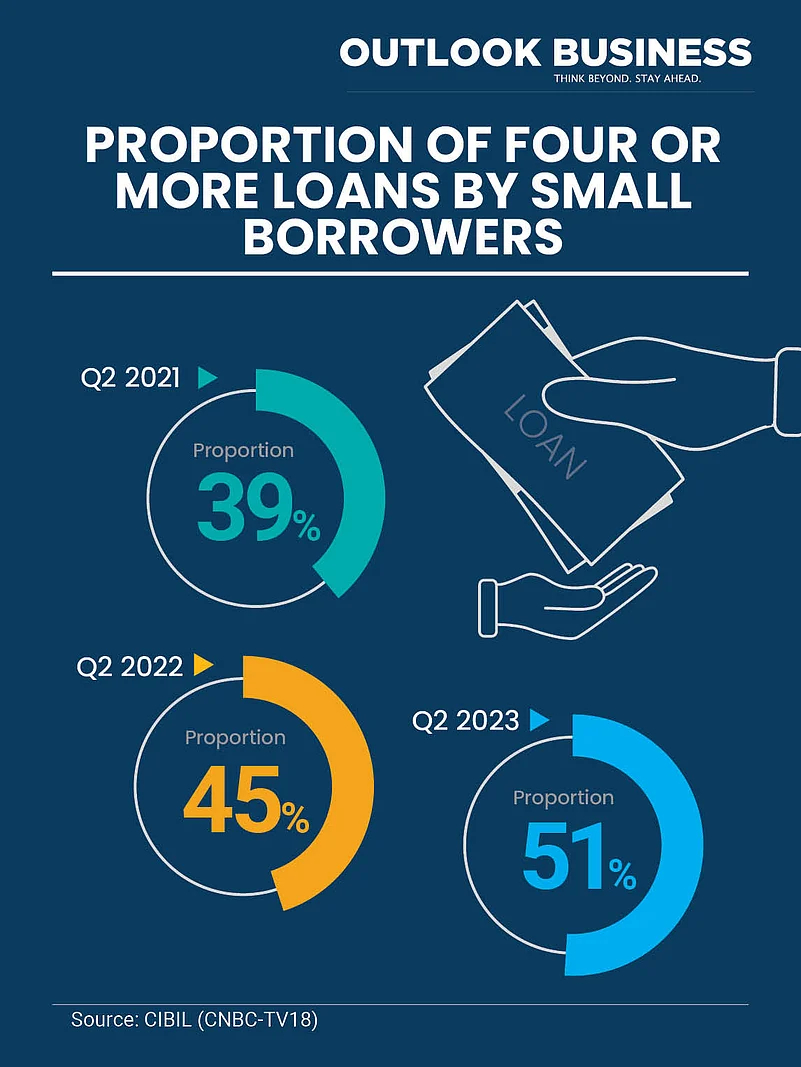
CIBIL data showcases another worrying trend. As per its analysis of borrowers of less than Rs 50,000 who had taken loans in the past 6 months, it found that proportion of borrowers having 4 or more loans has increased from 39 per cent in FY21 to 51 per cent in Q2 FY23. The implications of such a borrowing led consumption growth have divided economists.
Nikhil Gupta, Chief Economist at Motilal Oswal Financial Services, noted in his recent book ‘The Eight Per Cent Solution’ that while household debt is still not at an alarmingly high level, the financials of households have worsened dramatically over the last decade. “The ratio of household debt to household savings has risen from 1.1x a decade ago to 1.8x in FY22. It means that while a year’s worth of household savings was sufficient to pay off the entire household debt a year ago, it now takes almost 1.8 years’ worth of savings to achieve the same feat,” he wrote in his book.
He opined that the country needs to slow down consumption growth and work on improving the financials of household sector. Analysts have pointed out that increasing financial fragility of the households won’t bode well for the economy.
However, Professor Jayanth Verma, who is part of RBI’s Monetary Policy Committee, had a different take on the issue. He opined during the MPC meet, “Willingness to consume at the cost of reducing savings is very important because it is household consumption that has been propping up the economy. This consumer confidence could become a self-fulfilling prophecy as robust consumption demand stimulates growth, generates income and strengthens household balance sheets.”
While households have taken on more debt and reduced their savings, there isn’t any visible broad-based uptick in consumer demand yet. The last six years have also seen share of self-employment rise while wage employment has shrunk. India Ratings research shows the precarious state of income growth. While the real wage growth posted year on year growth of 9.5 per cent for non-finance corporates in Q4FY23, the number was low at 1.7 and 2.7 per cent for rural agri and urban minimum wages respectively.
If consumption growth continues to outpace the growth in income, household’s financial savings are expected to remain at its record low level. As Professor Verma indicated, the hope would be to drive up private investment, which has remained sluggish, through high consumer demand on the back of increased leverage. The Finance Ministry had also earlier indicated that the confidence of households to take on more debt without any strong rise in delinquencies suggests there isn’t anything to worry about.
Indian economy had to suffer the brunt of poor lending standards to corporates in the previous decade, which led to high profile defaults, like from Vijay Mallya and Nirav Modi. With that episode in mind, the central bank has clearly warned the banks to keep a check on their lending. Anxiety of policymakers and analysts over the rising leverage of households amidst declining income is all but natural. After all, loans going bad will hurt the hard-fought victory of banks against NPAs in the last few years. While people could associate names with the previous crisis in the form of Mallya and Modi, who could be caught if law enforcers mean business, large swathes of small borrowers defaulting at the same time can create a crisis of enormous proportion for regulators. No wonder the RBI has moved to caution banks on small unsecured lending. But will they heed the advice?






